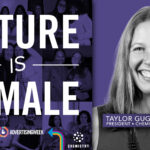By Luke Fenney, SVP, Publishers & Platforms – International, LiveRamp
Live sports is booming as a cultural and commercial powerhouse. The continued rise of women’s sport, as seen with the recent UEFA Women’s Euro final drawing more than 12 million viewers, is opening up broader and more valuable demographics that platforms are eager to attract
In fact, global sports media rights were valued at £46 billion ($62 billion) in 2024, representing a 12% year-over-year increase, which is projected to continue growing as broadcasters and streaming platforms compete for these viewers. What’s more, Sky has signed a new Premier League contract that brings the number of televised games from 128 to 215, while DAZN accounts for a growing share of global sports streaming spend in 2025. These deals are not just about growing viewership; they highlight the increasing opportunities for brands and agencies to connect with these highly engaged audiences.
Advertisers have always been attracted to the scale and passion surrounding live sports, yet the ways fans engage have changed. Audiences are no longer confined to the stadium or their living rooms; attention shifts constantly between the live match, checking highlights or fantasy drafts on mobile, or discussing plays on social media.
The shift towards live sports consumption via digital, data-driven environments offers an advantage for advertisers. Audiences are increasingly logged in, authenticated, and addressable, allowing advertisers to deliver timely, relevant messaging. However, even with the most robust first-party data, no single brand or platform can see the entire customer journey by itself. At a time when exposure needs to be tied to outcomes, fragmented viewing habits and purchasing journeys demand a coordinated, data-driven approach across all devices. This takes collaboration.
Why collaboration is a winning strategy
Taking inspiration from the athletes on screen, the heart of effective sports advertising lies in teamwork, rigorous data analysis, and expert execution. Just as modern sports teams use GPS trackers, player statistics, and performance analysts to refine their tactics during a game, advertisers also need a scientific, agile approach. Identity and privacy-enhancing data collaboration technology is the foundation here: it connects fragmented datasets into a clear picture of the fan, enabling brands and media owners to overlay and consolidate their internal insights to gain a unified, individual-level view of audiences.
Collaboration is also key to understanding media performance and measuring sports strategies outside of owned properties, across multiple platforms. Potential partners extend far beyond CTV advertising into retail media, social platforms, AI-driven search, and everywhere else consumers are spending their time, allowing brands to run integrated, multi-channel campaigns that deliver impact across the entire fan journey. For example, a CPG brand can reach a fan during Friday night football on Sky Sports, reinforce that message on TikTok via creator content on Monday, and close the loop with a retail activation at Tesco by the end of the week. Where traditional sports broadcast methods once relied on panels and proxies, today’s connected environments, in concert with collaboration technology, subsequently allow the whole ecosystem to do more for measurement and planning.
These platforms offer real-time engagement and performance data, which advertisers can use to optimise their message to audiences in contextually and thematically relevant ways. A sportswear brand might discover many of its Gen Z shoppers also watch the women’s rugby Super League. These collaborative insights enable both sides to make smarter decisions, not just in media buying, but also in programming, merchandising, and even product development. What’s more, all of this is now measurable not just in impressions or clicks, but real-world outcomes like QR scans, website visits, and in-store sales.
The long game
Winning a championship is never about one pass or one game; it’s about consistent teamwork across the season. The same is true for data collaboration.
Brands that treat data collaboration as a long term investment, building durable partnerships and continually refining their approach, will unlock the most meaningful efficiencies and insights over time.











